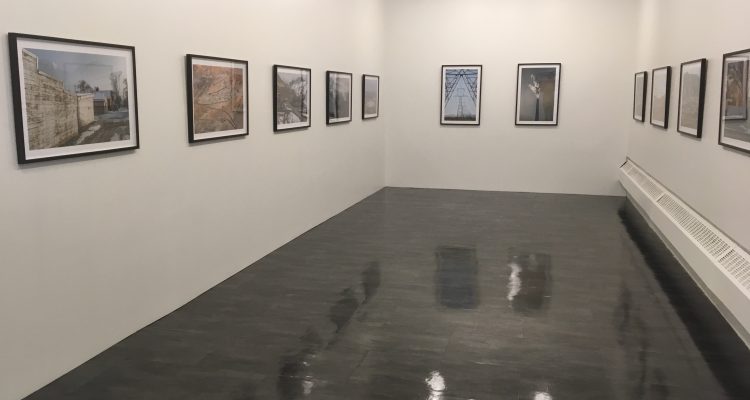The Lukacs Gallery, located in Loyola Hall, hosted artist Reid Elem’s exhibit the “Utah Air Project” from March 20 through April 3. Reid Elem is an artist and educator who uses photography to touch upon various topics in a contemporary context. According to his website, Elem has a Master of Fine Arts in Photography from Savannah College of Art and Design in Savannah, Ga. His exhibit, “Utah Air Project,” at Fairfield University deals with the effects of air pollution in Utah.
“‘The Utah Air Project explores population expansion, development, the consumption of energy and resources and inevitability the influence that the by products of these processes have on the air in Utah,” Elem states in an informational panel video on the wall at the entrance of the exhibit.
On this panel, Elem continues to discuss an atmospheric phenomenon associated with this project called “inversion.” Inversion is a change in the regular behavior of temperature in the troposphere that causes a layer of warmer air to lie above the layer of cool air at the surface. Due to inversion and Utah’s landscape of valleys and mountains, this warm layer of air will ultimately trap dangerous air contaminants in the atmosphere – poisoning the air in Utah. Elem proceeds to mention how inversion is more noticeable during the winter months, but can be seen periodically throughout the year. This is due to a variety of air pollution causes such as coal fired power plants, an increase in vehicles on the roads, incineration used within industrial businesses and mining productions.
One of Elm’s main goals is to document the source of this contamination by capturing the history and present condition of Utah’s people, places and land – anything affected by the air pollution running rampid in Utah.
When walking into Elem’s exhibit, a viewer can immediately feel a sense of passion coming from Elem’s work. The fact that he took the time to go to various spots all over the state of Utah to document and record all of this is extraordinary. As for the images themselves, they each demonstrate something remarkable. Every image captures a unique aspect of air pollution. The photographs range from something as simple as a smoke stack from a factory to the natural landscape of Utah being plagued by gray skies and power lines.
Oddly enough, Elem captures the beauty of Utah while photographing the aspects of different cities. By doing this, Elem is able to capture the destruction as well. For example, in one photograph it seems as if one is looking out at a beautiful view of a city’s landscape surrounded by mountains. After studying Elem’s photograph, one can see the smog encasing the city. Suddenly, what once seemed like a beautiful photograph has now turned into a discussion about destruction.
Elem does a good job invoking a great deal of thought in observers of his work. One of the main photographs of the exhibit, which was used as the exhibit’s official postcard and featured on Elem’s Instagram page, is that of an open burning. The photograph, or “Open Burning, Powerhouse Road – located in Spanish Fork, Utah,” is one of the more dramatic and impactful photographs of this exhibit. In the picture, it depicts a scene of a white truck beside a fire starting in a patch of grass. Elem’s photograph manages to bring the ugliness of what we, as human beings, do to our planet to light.
“This project took all sorts of turns this last year and helped me realize that everything is connected to everything,” Elem stated on his Instagram in regards to the process. In the specific post where he focuses on this photograph, Elem mentions how the burning photograph defined for him the human struggle of “attempting to keep a clean and prosperous existence and the negative byproducts of these efforts. Pushing forward with production…”
The exhibit as a whole draws attendees in the moment they enter. The photographs take breathtaking images and reveal the extent of humanity’s effects on them. The crisp, clean, vibe of the gallery differs to the theme of pollution – nevertheless, it was intriguing. One of my favorite photographs was an unnamed work of a factory’s white smoke contrasting against a night sky. It reminded me of driving at night alongside a highway. Another great factor to Elem’s exhibit was the relatableness of it all. While air position is a serious issue occurring in Utah, it is also affecting the world as a whole.
Elem’s photographs draw attention to a topic we should all be thinking about by demonstrating what a specific and unique landscape is going through due to air pollution. It makes it easier for a viewer to digest the whole issue of pollution and really leaves viewers wondering what to do next to stop an issue from continuing to destroy our environment.


Leave a Reply